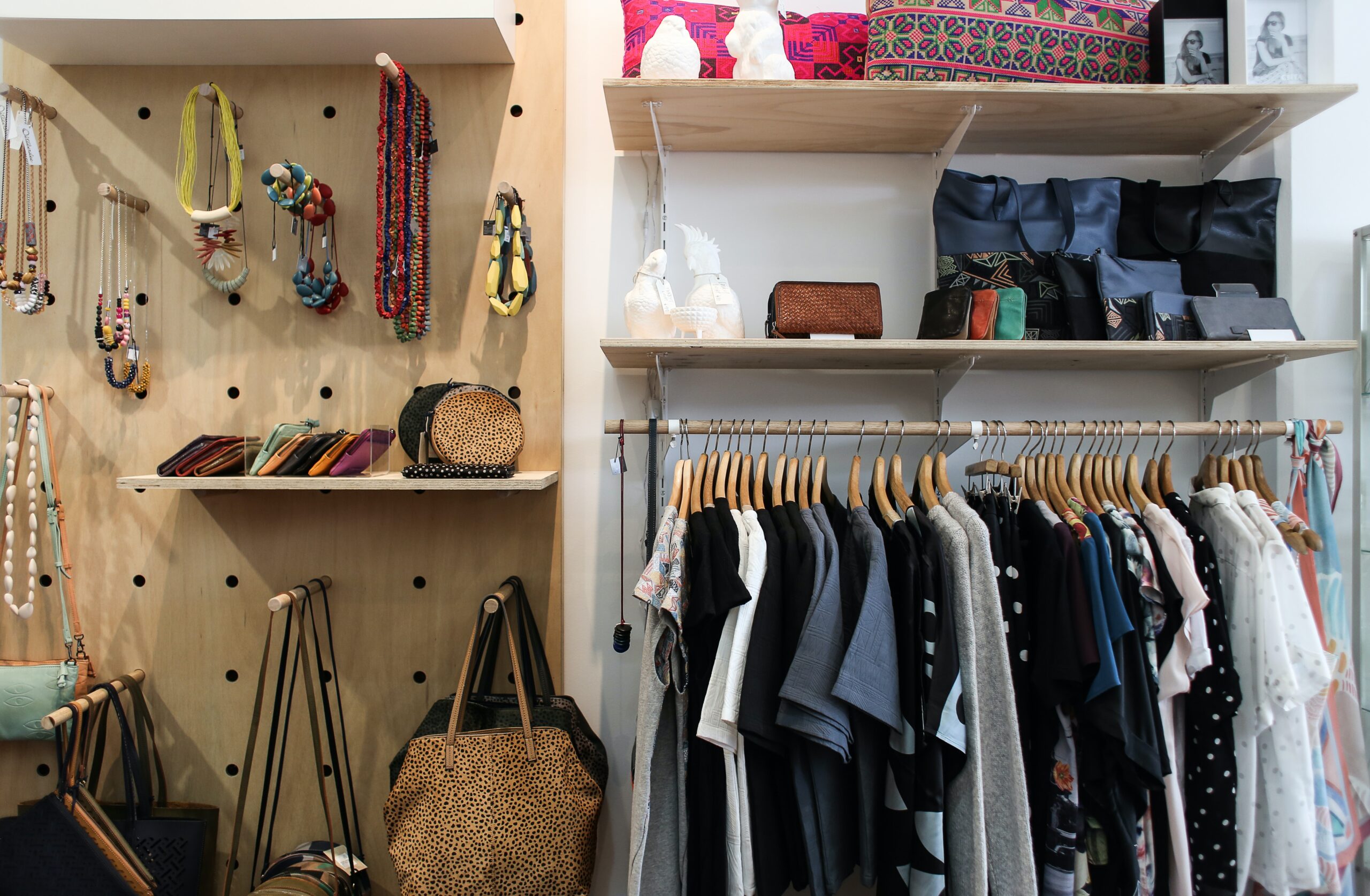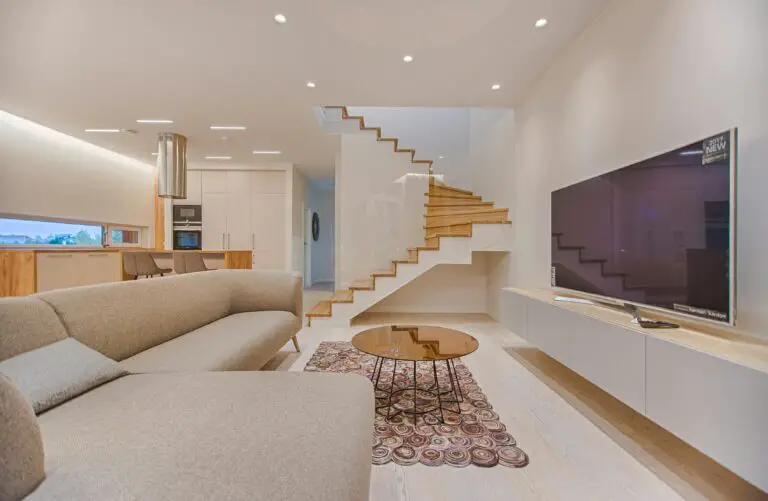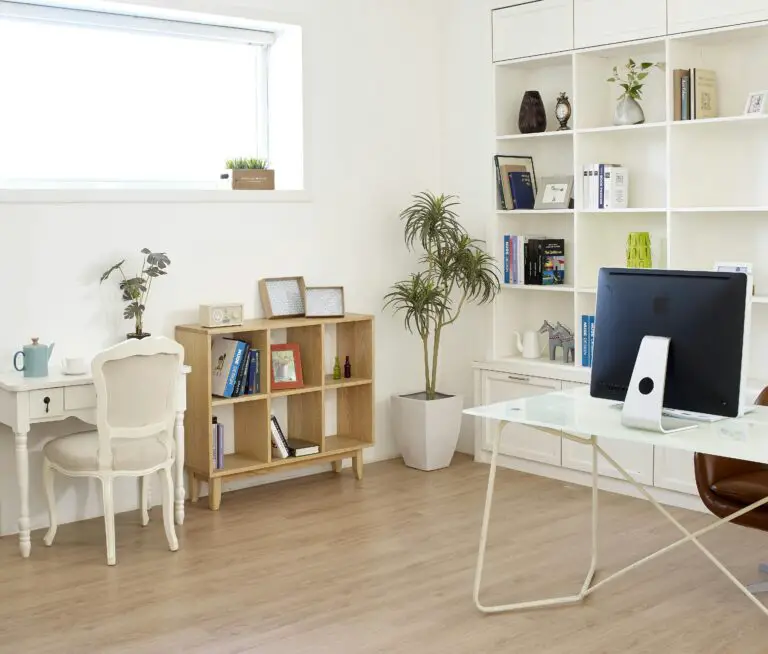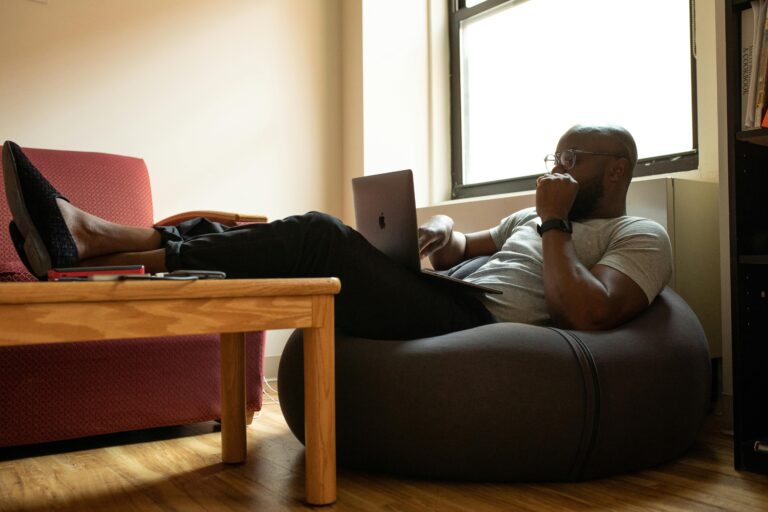If you’ve ever opened your closet doors and been met with chaos, overflowing with clothes and accessories, you’re not alone. A disorganized closet can lead to frustration and wasted time searching for that perfect outfit. However, fear not!
With the right strategies and creative solutions in our comprehensive guide on inspiring ideas for organizing your closet space, you can turn your closet into an organized oasis that sparks joy and makes getting ready a breeze.
I. Assessing Your Closet Space

Before diving into the organizing process, it’s essential to assess your closet space and identify any challenges or problem areas. By taking a closer look at your belongings, you can better understand your storage needs and preferences.
A. Taking Inventory of Your Belongings
Your first step is to evaluate everything you have in your closet. This includes clothing items, accessories, and any other items you store in your closet. Sort them into categories, making it easier to visualize the amount of stuff you own and determine what truly deserves a place in your organized space.
Start by emptying your closet completely. This may seem daunting, but it’s crucial to assess the real extent of your belongings. Lay out your clothing items on your bed or a clean surface, grouping them into categories like shirts, pants, dresses, shoes, and accessories.
Next, evaluate each item and ask yourself a few critical questions:
- Have I worn this in the past year?
- Does it still fit me well?
- Is it damaged or in need of repair?
- Do I feel confident and comfortable when wearing it?
Be honest with yourself and create three separate piles: Keep, Donate, and Discard. The Keep pile should include items you love, wear regularly, and are in good condition. The Donate pile is for gently used clothing you no longer wear but could benefit someone else. The Discard pile is for items that are worn out, stained, or beyond repair.
Once you’ve decluttered your clothing, repeat the process with your accessories and other items. This thorough inventory will serve as a foundation for the organizing process ahead.
B. Identifying Problem Areas and Common Challenges
During your closet assessment, you may notice common challenges that hinder organization. Identifying these issues will help you address them effectively.
Clutter and Disorganization
Many closets suffer from clutter due to not having a proper organizational system in place. Haphazardly tossing items onto shelves or cramming everything onto hangers can quickly lead to a messy and chaotic closet.
Solution: Implement a structured organization system that utilizes appropriate storage solutions and keeps items neatly separated and visible.
Lack of Storage Solutions
A closet without the right storage solutions can make it challenging to keep items organized and accessible. Limited shelf space, insufficient hanging rods, and no dedicated accessory storage can all contribute to a cluttered closet.
Solution: Invest in closet systems and accessories like shelves, hanging organizers, and drawer dividers to maximize your storage space.
Inefficient Use of Space
Many closets have wasted space that goes unused. Often, corners, high shelves, and the back of doors remain neglected, while the primary areas become overcrowded.
Solution: Utilize every inch of your closet space by employing space-saving techniques and creative storage solutions.
C. Understanding Your Organizational Needs and Style Preferences
The key to a successful closet organization is understanding your specific organizational needs and style preferences. Knowing your preferences will help you design a closet that suits your lifestyle and makes getting dressed a joy.
Minimalist Approach
If you prefer a minimalist wardrobe, focus on creating a capsule wardrobe with versatile, high-quality pieces that can mix and match effortlessly.
Categorization and Grouping Preferences
Grouping similar items together can make it easier to find what you need. Consider organizing by type, color, or season based on your preferences.
Accessibility and Ease of Use
Think about how you want to access your clothing and accessories. Would you prefer open shelves or concealed drawers? Accessible hangers or specialized hooks for your most-used items?
Understanding your organizational needs and style preferences will help you tailor your closet space to your unique requirements and make your daily routine more enjoyable.
II. Planning Your Closet Transformation
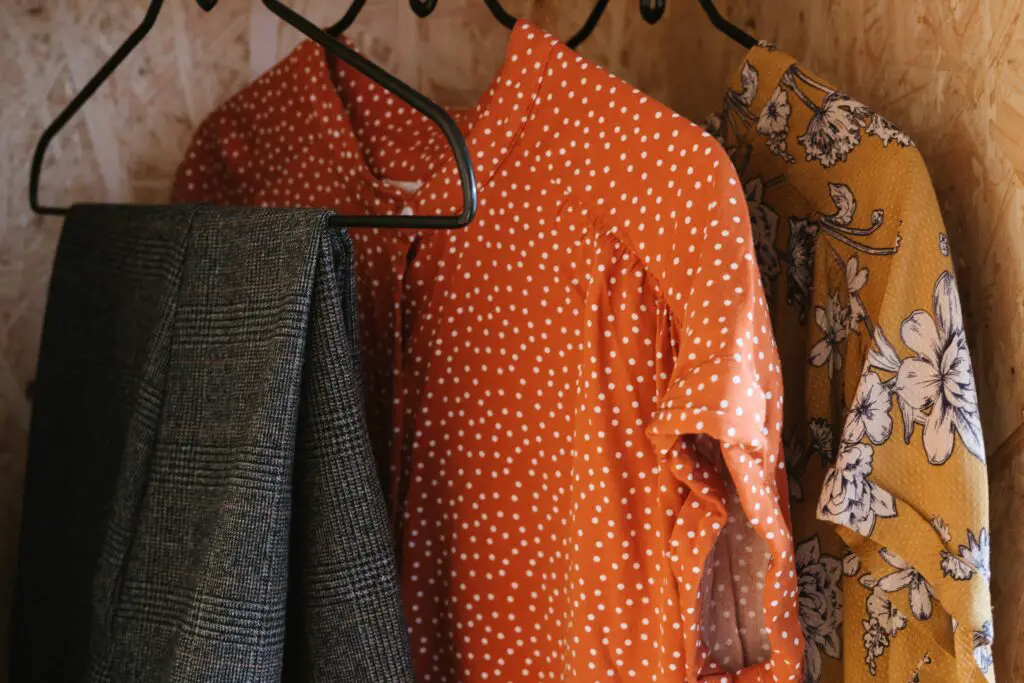
Now that you’ve assessed your closet space and identified your organizational needs, it’s time to plan the transformation process. This phase involves setting goals, creating a budget, and designing your ideal closet layout.
A. Setting Goals and Objectives
Clearly defining your goals and objectives for your closet space will give you a sense of direction and purpose during the organization process. Consider what you want to achieve with your newly organized closet and jot down your objectives.
- Maximize Storage Space: Aim to utilize every available inch of your closet efficiently, creating more storage space for your belongings.
- Optimize Organization for Easy Access: Design a system that allows you to quickly find and access your clothes and accessories without rummaging through piles of clutter.
- Create an Aesthetically Pleasing Space: Visual appeal is essential to create an inspiring and enjoyable closet space that reflects your style and personality.
B. Creating a Budget
Before diving into the closet organization process, it’s essential to set a budget for the project. Assess your existing storage solutions and determine which elements need upgrading or adding.
- Evaluate Existing Storage Solutions: Take a look at the current storage solutions in your closet and determine if any are salvageable or need replacement.
- Research Cost-Effective Organizing Products: Shop for affordable and practical organizing products that fit your budget. Look for sales, discounts, and DIY solutions to save money.
Setting a budget will help you prioritize your expenses and invest wisely in organizing tools and solutions.
C. Measuring and Assessing Your Closet Layout
Measuring your closet accurately and assessing its layout is crucial to plan an efficient and functional closet organization. Follow these steps to get accurate measurements:
- Measure the Width, Height, and Depth: Use a tape measure to determine the width, height, and depth of your closet space. Measure all the walls, including the back, left, and right sides, as well as the height from the floor to the ceiling.
- Account for Obstacles: Note the location of doors, light fixtures, and any other obstacles that may affect the closet layout.
- Draft a Closet Layout Plan: Use graph paper or digital design tools to create a scaled-down layout of your closet. This will help you visualize the space and plan the positioning of various storage solutions.
Taking accurate measurements and creating a closet layout plan will make the organization process smoother and ensure all elements fit perfectly.
III. Organizing Strategies and Techniques
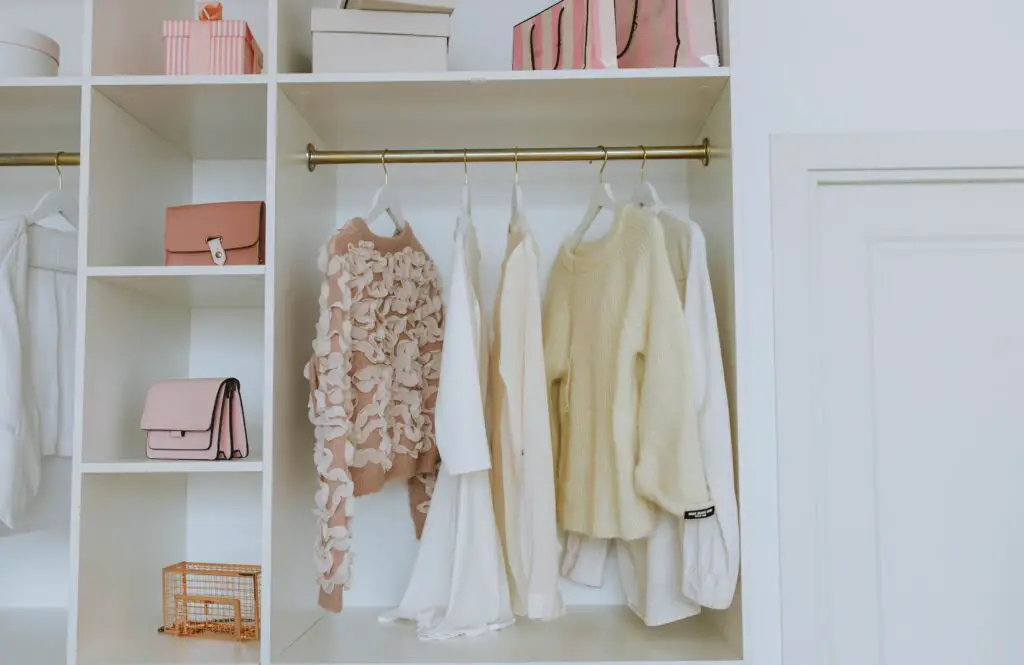
With a well-thought-out plan in place, it’s time to delve into various organizing strategies and techniques that will revamp your closet space.
A. Decluttering and Purging
Before you start organizing your belongings back into your closet, it’s essential to declutter and purge unnecessary items. Letting go of what you no longer need or use will free up space and create a more organized and efficient closet.
- Sort Items into Categories: Group your clothing, accessories, and other items into categories to make the decluttering process more manageable.
- Letting Go of Sentimental Items: While it can be tough to part with sentimental items, remember that decluttering allows you to create space for things that truly bring joy.
- Maintain the “One In, One Out” Rule: Adopt the “one in, one out” rule to prevent your closet from becoming cluttered again. For every new item you bring into your closet, remove an older item to maintain a balanced and clutter-free space.
- Regularly Declutter: Make decluttering a regular practice, going through your closet at least twice a year to remove items that no longer serve you.
B. Choosing the Right Storage Solutions
The success of your closet organization largely depends on choosing the right storage solutions that suit your needs and optimize your space.
- Closet Systems and Components: Invest in a modular closet system that allows you to customize your storage according to your needs. Components like shelves, racks, rods, and drawer units provide versatile storage options.
- Drawer Organizers and Dividers: Keep your drawers neat and organized with the help of dividers and organizers. They are especially useful for storing small accessories like socks, belts, and ties.
- Baskets, Bins, and Storage Boxes: Utilize baskets, bins, and storage boxes to corral items and keep them easily accessible.
Choosing the right storage solutions will create a clutter-free and visually appealing closet that simplifies your daily routine.
C. Utilizing Space-Saving Techniques
Small closets or limited storage space require innovative space-saving techniques to maximize their potential.
- Utilizing Vertical Space with Hooks and Hanging Organizers: Install hooks or hanging organizers on the back of your closet door or the walls to hang scarves, belts, and bags. This will free up shelf space and keep your accessories within reach.
- Installing Shelf Dividers: Shelf dividers are excellent for keeping stacks of clothes, bags, or linens separated, preventing them from toppling over and becoming disheveled.
- Using Slim Hangers: Replace bulky hangers with slim, non-slip hangers to maximize hanging space and create a uniform look in your closet.
Smart space-saving techniques will transform even the smallest closet into a highly functional and organized space.
D. Incorporating Smart Storage Ideas
Take your closet organization to the next level with smart storage ideas that make the most of every inch of your space.
- Utilizing the Back of Doors and Walls: Attach hooks, shoe organizers, or over-the-door racks to the back of your closet door to store accessories or shoes.
- Utilizing Underutilized Spaces: Don’t neglect the corners and high shelves in your closet. Utilize them with hanging organizers or baskets to store less frequently used items.
- Implementing a Rotating Seasonal Wardrobe System: To maximize your closet space further, consider a rotating seasonal wardrobe system. Store out-of-season clothes and accessories in under-bed storage containers or elsewhere, making room for the current season’s items.
These smart storage ideas will help you make the most of every nook and cranny in your closet.
IV. Design and Aesthetics in Closet Rooms

An organized closet doesn’t have to sacrifice style. Let’s explore how you can create a visually appealing and aesthetically pleasing closet space that brings you joy every time you open the doors.
A. Choosing a Color Scheme and Theme
A well-designed closet incorporates a cohesive color scheme and theme that complements your overall home decor.
Harmonizing with the Rest of the Room or Home Decor
Choose colors and themes that align with the existing aesthetics of your home. This will create a seamless flow and make your closet feel like an extension of the room.
Consider the overall color palette of your home and use it as a basis for selecting colors and patterns for your closet. Soft neutrals, such as whites, grays, and beiges, provide a clean and timeless look. Alternatively, you can add pops of color through accessories like bins, baskets, or decorative elements.
B. Lighting Considerations
Adequate lighting is crucial in a closet, as it enhances visibility and showcases your clothing and accessories.
- Enhancing Visibility and Aesthetics with Proper Lighting: Install bright and efficient lighting solutions to illuminate every closet corner. LED lights or adjustable track lighting can provide excellent visibility while adding a touch of sophistication to the space.
- Incorporating Task Lighting for Specific Areas: Consider adding task lighting for specific areas like the shoe rack or accessories section. Under-cabinet lights or motion-activated lights are practical options for these spots.
C. Adding Decorative Elements
Elevate the aesthetics of your closet by incorporating decorative elements that reflect your personal style.
- Using Decorative Hooks or Knobs: Upgrade your closet with decorative hooks or knobs that not only serve a functional purpose but also add a stylish touch.
- Incorporating Mirrors: Incorporating mirrors can be both functional and aesthetically pleasing in a closet. They provide a convenient space for outfit checks and visually expand the room, making it feel larger and more open.
- Personalizing with Artwork or Wallpaper: Add a personal touch by hanging artwork or applying wallpaper to the back of your closet walls. This adds visual interest and creates a custom look that’s uniquely yours.
By adding thoughtful decorative elements, your closet will become a space that sparks joy every time you step inside.
V. Maintaining Your Organized Closet
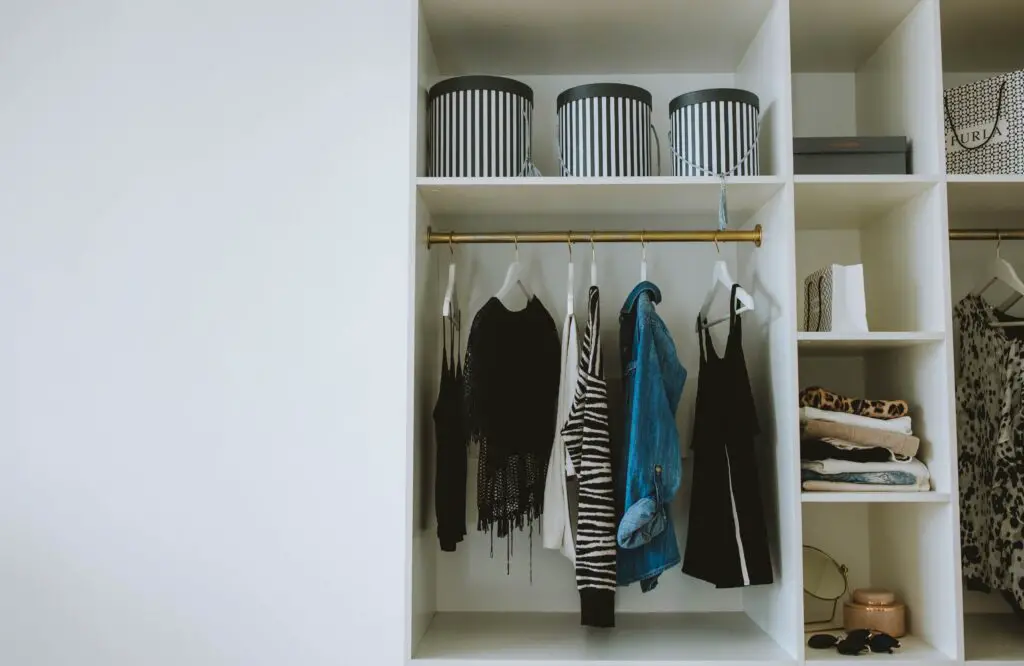
You’ve put in the effort to organize your closet, and now it’s essential to maintain order and avoid falling back into old habits.
A. Establishing a Regular Cleaning and Organizing Routine
Create a cleaning and organizing routine to keep your closet tidy and clutter-free.
- Weekly Organization Check-Ins: Schedule a weekly check-in to assess your closet’s organization and make any necessary adjustments. Return items to their designated spots, and address any clutter that may have accumulated.
- Seasonal Purging and Decluttering: Make seasonal purging and decluttering a habit to keep your wardrobe up-to-date and eliminate items you no longer use or need.
- Adopting the “One In, One Out” Rule: Continue the practice of the “one in, one out” rule, preventing your closet from becoming cluttered over time.
Consistency is key to maintaining an organized closet that stays functional and visually pleasing.
B. Adapting to Changing Needs
Life is ever-changing, and so are your organizational needs. Be adaptable and adjust your closet as your lifestyle and wardrobe evolve.
- Modifying the Organization System as Necessary: If your organization system isn’t working optimally, don’t hesitate to make changes. Reevaluate your needs and preferences periodically to ensure your closet serves you well.
- Adjusting to New Purchases and Belongings: With each new purchase, consider how it will fit into your existing closet organization. Make space for the new item by either removing something else or reassessing your storage solutions.
By staying flexible and adapting to your changing needs, your closet will remain organized and meet your requirements.
C. Staying Motivated to Keep the Space Organized
Staying motivated is crucial to maintaining an organized closet. Here are some tips to keep you inspired:
Celebrating Small Victories and Progress
Acknowledge the efforts you’ve put into organizing your closet and celebrate small victories along the way.
Seeking Inspiration from Others’ Organized Closets
Draw inspiration from other organized closets by browsing blogs, social media, or interior design magazines. Seeing what’s possible will motivate you to maintain your own space.
Remember that organizing is an ongoing process, and staying motivated will ensure your closet remains an inspiring and functional space.
Conclusion
We hope this detailed and practical resource has equipped you with the knowledge and motivation to transform your closet into a clutter-free and visually appealing haven.
Following the steps outlined in this guide, you can take control of your closet space, declutter your belongings, and create a well-organized area that brings you joy and simplifies your daily routine.
Remember, an organized closet is not only aesthetically pleasing but also contributes to a more peaceful and functional home environment. With consistent maintenance and a commitment to staying organized, your closet will remain a source of inspiration for years to come.
Frequently Asked Questions (FAQs)
1. How do you begin the process of organizing your closet space?
To start organizing your closet, begin by taking inventory of your belongings and decluttering items you no longer need or use. Group similar items together and invest in suitable storage solutions to maximize your space.
2. How can you optimize my closet layout for efficient organization?
Measure your closet accurately and draft a layout plan to visualize your organization. Consider incorporating space-saving techniques, utilizing the back of doors and walls, and using slim hangers to create an efficient and functional layout.
3. What can you do to maintain an organized closet?
Establish a regular cleaning and organizing routine, perform seasonal purging, and adopt the “one in, one out” rule to prevent clutter from building up. Stay adaptable and adjust your organization system as your needs change over time.
4. How can you make a closet space visually appealing?
Choose a color scheme and theme that harmonizes with your home decor. Incorporate adequate lighting to enhance visibility and aesthetics, and add decorative elements like hooks, knobs, mirrors, or artwork to personalize the space.
5. How often should you declutter a closet?
Aim to declutter your closet at least twice a year during seasonal transitions. Regular decluttering will keep your wardrobe up-to-date and maintain an organized closet.
